By J.D. ALT
I recently read in the WSJ that Modern Monetary Theory is defined as the proposition that the federal government can borrow as much money as it needs so long as the interest rate it pays is less than the growth rate of the GDP. The short article, by Desmond Lachman, went on to argue why this was a dangerously false premise. Thus, MMT got shot with two bullets in one paragraph: first by defining it in a way that negates its most fundamental principle (that the federal government doesn’t need to “borrow” fiat currency in order to spend fiat currency), and second, by declaring MMT to be not only false, but dangerous.
It’s remarkable how stubbornly tenacious mainstream economic thinking is about misunderstanding and fearing MMT. The fundamental belief that refuses to be shaken is that for a sovereign government to spend, it must first claim—either through taxation or borrowing—some portion of the profits of private commerce. This immediately sets in motion complex calculations about what percentage of those profits can be claimed for government spending before the profit-making capabilities of private commerce, itself, are harmed (because the capital that would otherwise be used for expansion, is being appropriated for government spending). When that point is reached, the calculations insistently predict, private commerce will cease to grow—perhaps even shrink—which perversely will then reduce the amount of currency available for the government to claim a portion of; if, under those circumstances, the government continues nevertheless to increase its spending (by insistently increasing its taxing or borrowing), private commerce will be driven to shrink even further, setting in motion a disastrous downward spiral. The calculations, in other words, are structured to demonstrate that government spending per se strangles the goose that lays the eggs—and, therefore, it is rational to argue that government spending should be limited, and specifically that it should not exceed some calculated percentage of GDP (which, of course, in most calculations of this sort, it already does)!
Why is it so difficult for MMT to get itself properly understood—and, once understood, to get itself over the hump of this narrative calculation? Part of the problem was revealed to me on New Year’s Day at McGarvey’s Saloon at City Dock in Annapolis when a neighbor—who is a retired banker, sharp as they come, and who understands quite well what fiat money is—said to me, “Yes, yes, that’s all well and good, but the fact is the federal government does not own the Federal Reserve. It is owned by the private banking industry.”
Whether or not he was technically correct (and the reality of it is so ambiguous that arguing the point on one side or the other is futile) what he meant, of course, is that it is meaningless for MMT to argue that the sovereign U.S. government creates U.S. dollars by fiat and then spends them into the private economy—because it is the Federal Reserve, in fact, that creates U.S. fiat dollars, and it does so only to service the needs of private commerce. The Federal Reserve cannot, by law, create U.S. fiat dollars for government spending. It can create them, as necessary, to maintain the liquidity of the reserve banking system—which generates the loans that support the profit-making enterprise of private commerce—but it cannot create fiat dollars and deposit them in the U.S. Treasury’s spending account. Therefore, the fundamental belief that cannot be shaken (as described above) is unshakable because it is, apparently, based in reality: Operationally, it seems, the sovereign federal government really does have to claim—through taxation or borrowing—some portion of the profits of private commerce (fiat dollars created by the Federal Reserve) in order to have dollars to spend.
MMT therefore is made difficult not because it must disprove a false “truth,” but because the “truth” which it is trying to replace cannot seem to be disproved so long as one accepts words to have their conventional meanings. This dilemma is often brought to light with the question: if the Central Bank and the Treasury are really two components of the same sovereign entity, why are they not set up that way? If the Federal Reserve can create sovereign fiat dollars at will, why limit this ability only to the meet the “demands” of the operations of the reserve banking system in support of private commerce? Why is it not structured to also enable the Federal Reserve to create fiat dollars as “demanded” by the spending needs of the federal government in support of the collective good—as is implicitly (and often explicitly) suggested by the advocates of MMT?
Again, the answer most likely lies in my neighbor’s perspective: because the banks—despite the fact they grudgingly allowed themselves to be “regulated” by a federal agency— “own” the banking system. And being “owners,” they have a natural prerogative to guard against what they fear most, which is dilution of the value of the fiat currency they use: i.e. that they might loan out dollars that have one value, and then be repaid with dollars having a lower value. In other words, inflation. Fiat dollars created in support of private commerce, the thinking must go, will not produce inflation because the money supply increases commensurate with the production of the goods and services private commerce produces for people to buy. More dollars = more goods and services, therefore the value of the dollars relative to the goods and services to be purchased remains more or less constant. (A good argument, but not a proven explanation of the dynamics of inflation.)
On the other hand, fiat dollars created directly for government spending (the argument continues) would not typically create more goods and services for people to buy; instead, after the government spends them (for example, to make a welfare payment) they simply increase the number of fiat dollars competing for the existing goods and services produced by private commerce. In other words, creating fiat dollars for the purpose of government spending inevitably must dilute the value of the currency—and the banks will realize their greatest fear: getting repaid with dollars less valuable than what they loaned out. Therefore, the banking industry, from the very beginning, when the Federal Reserve system was created, made sure it was structured so this could not happen; i.e. the federal government, if it is short on spending money, is required to issue treasury bonds to make up the short-fall—an operation which became known by the pejorative term “deficit spending.”
Given the context of this understanding, it seems perfectly reasonable that mainstream economic thinking (which is primarily the thinking of the banking and financial industries) clings so tightly to the unshakable belief that a sovereign government, in order to spend, must first claim, through taxation or borrowing, a portion of the profits of private commerce—as well as all the other “rational” axioms that build upon that belief:
- That to avoid the appropriation of too much capital from private commerce, government taxing and borrowing must be limited to some small percentage of GDP;
- That limited government is, therefore, implicitly desirable—and expanded government implicitly to be feared as endangering the profits of private commerce;
- That to keep government limited, social welfare and safety net services should primarily be the responsibility of voluntary private charity and philanthropy rather than federal spending;
- That any federal regulation hindering the ability of private commerce to generate profits hurts the collective good, because hindering profits ultimately hinders the profit-share the collective good can claim or borrow;
- Any kind of federal welfare payments are inherently inflationary because they give people money to spend without producing anything for them to spend the money on;
- etc.
Is there a chink in the armor of this narrative that might give MMT an opening? Is there a seed of misunderstanding in the “truth” that it presents? The place to look, I think, is the fundamental notion that federal spending absorbs and threatens the availability of capital for private commerce. If that is true, then it is, indeed, reasonable that federal spending should be curtailed and limited—which means it is reasonable that the activities and responsibilities of the federal government, itself, should be curtailed and limited. If it is not true, however, a completely different rationale is required to argue that the sovereign government’s efforts, responsibilities, and spending on behalf of the collective good of its citizens, should be limited.
In other words, to look from a slightly different angle, is it possible for the sovereign government’s spending, in the interest of the collective good, to expand by orders-of-magnitude beyond current spending—without increasing rates of taxation or diluting the value of the currency—while private commerce remains fully and happily capitalized to pursue its profit-making enterprises?
MMT answers “yes.” The key to this answer lies in seeing a flaw in the conventional “truth” of treasury bonds, the reality of what treasury bonds legally represent and, consequently, the value and usefulness they have in the operations of private commerce.
To uncover the flaw, begin with the question: why would a private bank (or anybody else in private commerce) trade real, genuine, “spendable” sovereign fiat dollars for a treasury bond representing fiat dollars that can’t actually be “spent” for, say, ten years? Does the U.S. Treasury coerce the purchase of its bonds? In fact, banks and big spenders and players in private commerce pretty much line up to trade their fiat dollars for the Treasury’s bonds like cattle line up at a hay-trough. Why? Hunger—not for the crunch of hay, but for safe, guaranteed, no-work-required profits. Safe, guaranteed, no-work-required profits are not something easily found in the world of private commerce. They are much appreciated and sought after, however, because the biggest headache in private commerce, if the truth be told, is figuring out what to profitably do with profits. There is a staggering amount of profit in private commerce that hasn’t figured out what to do next. If it does nothing, it simply shrinks due to “background” inflation. If it rushes to invest itself recklessly, without the concerted and creative efforts required by successful private enterprise, it risks being lost completely. Thus, the U.S. treasury bond is a godsend for private commerce: the players trade their excess capital (sovereign fiat dollars) for the interest-bearing treasury bonds and make a profit without having to creatively exercise their brains or worry about anything at all—except, perhaps, whether the United States is going to collapse as a sovereign government.
What makes the treasury bond even more magical, however, is that if, say, a big opportunity comes along to invest real sovereign fiat dollars in a killer profit-making venture—no problema! The secondary market for U.S. treasury bonds—other folks who can’t imagine, right now, what to do with their private commerce profits—provides instantaneous liquidity: the treasury bond can be traded for the real sovereign fiat dollars needed to make the killer investment.
Given this transparent and virtually seamless interchangeability between U.S. fiat dollars and U.S. treasury bonds, it is clear the treasury bond represents something fundamentally different than the government’s “borrowing” of dollars from private commerce. The fiat dollars supposedly “borrowed” are, in fact, replaced with another kind of fiat dollar represented by the treasury bond. Therefore, it is INCORRECT to imagine or say that the issuing of treasury bonds subtracts capital from private commerce. In fact, the opposite occurs: first, the fiat dollars represented by the bonds are greater than the fiat dollars private commerce traded for the bonds (because the bonds are interest-bearing); second, when the federal government subsequently spends the fiat dollars it received in trade, they are spent back into the market of private commerce. The net result of the entire operation, therefore, is that private commerce now has substantially more capital available to invest than it had before the trade.
The conventional meaning of the term “borrow”—as applied to the U.S. Treasury’s operation of issuing treasury bonds—then, is the seed of misunderstanding that lies at the heart of MMT’s dilemma. Correcting the misunderstanding should make it possible for MMT’s logic not only to be accepted, but for that logic to prevail in future dialogs about what the federal government can undertake to accomplish—and pay for—in the collective interests of society:
- U.S. fiat dollars are promissory notes for federal tax credits—of which the federal government has an infinite supply (and for which there is infinite demand)—so long as U.S. citizens and businesses are required by law to pay federal taxes.
- The federal government does not “borrow” fiat dollars from private commerce; it trades new fiat dollars, issued by the U.S. treasury in the form of treasury bonds, for existing fiat dollars in the private market (created by the Federal Reserve); the government then spends the fiat-dollars it has traded for back into private commerce.
- What is called “federal government borrowing,” in the lexicon of mainstream “truth,” is actually and operationally the issuing of new fiat dollars by the U.S. treasury—and these new fiat dollars are what, operationally, enable the government to purchase goods and services for the collective benefit of society.
- “Deficit spending” by the federal government, therefore, does not increase something called the “national debt” because the holders of treasury bonds already “have their money.” (This is why no one is knocking on the federal government’s door asking for the “national debt” to be repaid.)
- Federal spending, therefore, does not require the government to claim a portion of the profits of private commerce; and increasing federal spending, therefore, does not require increasing that claim—either through taxing or “borrowing.”
- Federal spending, through the issuing of treasury bonds, in fact results not only in the creation of useful public goods and services, but in the expansion of capital in the private markets.
It is therefore possible to understand that fiat money creation by the sovereign government has two sources—the Federal Reserve, which creates fiat dollars as necessary to meet the liquidity demands of private commerce, and the U.S. treasury, which creates fiat dollars (in the form of treasury bonds) to meet the demands of federal spending beyond what can be covered by tax collections.


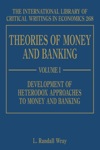
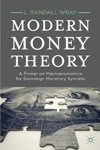
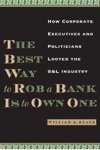
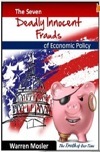
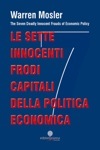
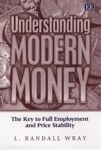
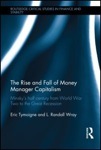

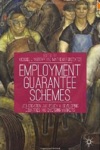
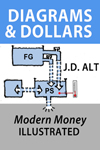
28 responses to “MMT’s Opening”